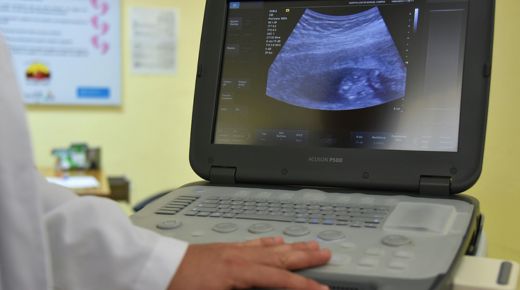
Ultrasound technology has long been a cornerstone of diagnostic imaging, providing a non-invasive and effective means of examining the body’s internal structures. Recent innovations are taking this essential tool into previously uncharted territory, offering capabilities that extend far beyond traditional applications.
As medical imaging continues to evolve, ultrasound’s emerging technologies open up new avenues for treatment and diagnosis by enhancing accuracy, accessibility, and overall efficiency. In this blog post, we’ll explore the state-of-the-art advancements in ultrasound technology that are setting the stage for the next generation of medical imaging solutions. Read on!
Miniaturization and Portability
One of the most significant advancements in ultrasound technology is the miniaturization of devices. Handheld ultrasound devices now present a high degree of portability and convenience, allowing healthcare professionals to perform diagnostic imaging at the patient’s bedside or in remote locations.
This shift toward compact and portable solutions is improving the accessibility of ultrasound in a broader range of medical settings, including emergency care, rural clinics, and even home healthcare.
AI-Powered Ultrasound
Artificial intelligence (AI) is playing a crucial role in advancing ultrasound technology. Through AI algorithms, ultrasound systems can now automate image analysis, boosting diagnostic accuracy and efficiency.
These AI-powered systems assist with tasks such as identifying abnormalities, measuring organ sizes, and differentiating between tissues. By reducing the dependence on operator expertise, AI-enhanced ultrasound devices are making high-quality diagnostics more widely available and shortening the time needed for assessments.
High-Resolution Imaging
Recent technological breakthroughs have refined the resolution of ultrasound images. The development of high-frequency transducers has enabled imaging with unprecedented clarity, allowing clinicians to view detailed structures, such as blood vessels and intricate tissue layers.
Aside from this, enhanced Doppler imaging also aids in visualizing blood flow with greater precision, supporting diagnoses related to circulatory conditions.
Real-Time 3D and 4D Ultrasound
While traditional 2D ultrasound has been a staple in diagnostics, the advent of real-time 3D and 4D ultrasound technologies offers a more comprehensive view of the body’s internal structures.
3D ultrasound produces a three-dimensional static image, while 4D imaging adds a temporal element, enabling clinicians to view moving images—much like a video. These advancements are particularly beneficial in prenatal care, where they can provide expectant parents with detailed views of their developing baby.
Fusion Imaging
Fusion imaging merges ultrasound with other imaging modalities, such as computed tomography (CT) or magnetic resonance imaging (MRI), to create a hybrid picture that leverages the strengths of each method.
This technology is beneficial for more precise diagnostics and treatment plans, as it combines the real-time imaging capability of ultrasound with the detailed anatomical information from other modalities. Fusion imaging is promising in fields like oncology and cardiology, where detailed imaging is crucial for identifying issues and planning interventions.
Telemedicine Integration
The integration of ultrasound technology into telemedicine platforms is another groundbreaking step forward. With remote consultations becoming increasingly prevalent, portable ultrasound systems can facilitate real-time imaging during virtual visits. This advantage allows specialists to guide local caregivers in capturing and interpreting ultrasound images, extending the reach of expert healthcare regardless of geographical limitations.
Wearable Ultrasound
Emerging as a novel concept, wearable ultrasound technology aims to continuously monitor a patient’s condition in real-time. These devices can be attached to the skin and are especially useful for continuous monitoring of organ functions or fetus development without repeated hospital visits. By providing real-time data, wearable ultrasound helps facilitate more informed clinical decisions promptly.
The future of ultrasound is bright and promising, driven by innovations that continue to push the boundaries of medical imaging. As these technologies advance, they offer the potential to revolutionize diagnostics by making them more precise, accessible, and efficient. Healthcare providers, patients, and the medical community as a whole stand to benefit significantly from these cutting-edge developments.
If you’re interested in exploring the benefits of these advancements firsthand, it may be worthwhile to consult a medical diagnostic imaging center in your area, like St Vincent’s Private Radiology. These centers can provide expert insights and services utilizing the latest ultrasound technologies to ensure that you receive comprehensive and accurate medical assessments. As we continue to witness these exciting developments, the potential for better health outcomes and improved healthcare efficiency remains boundless.






